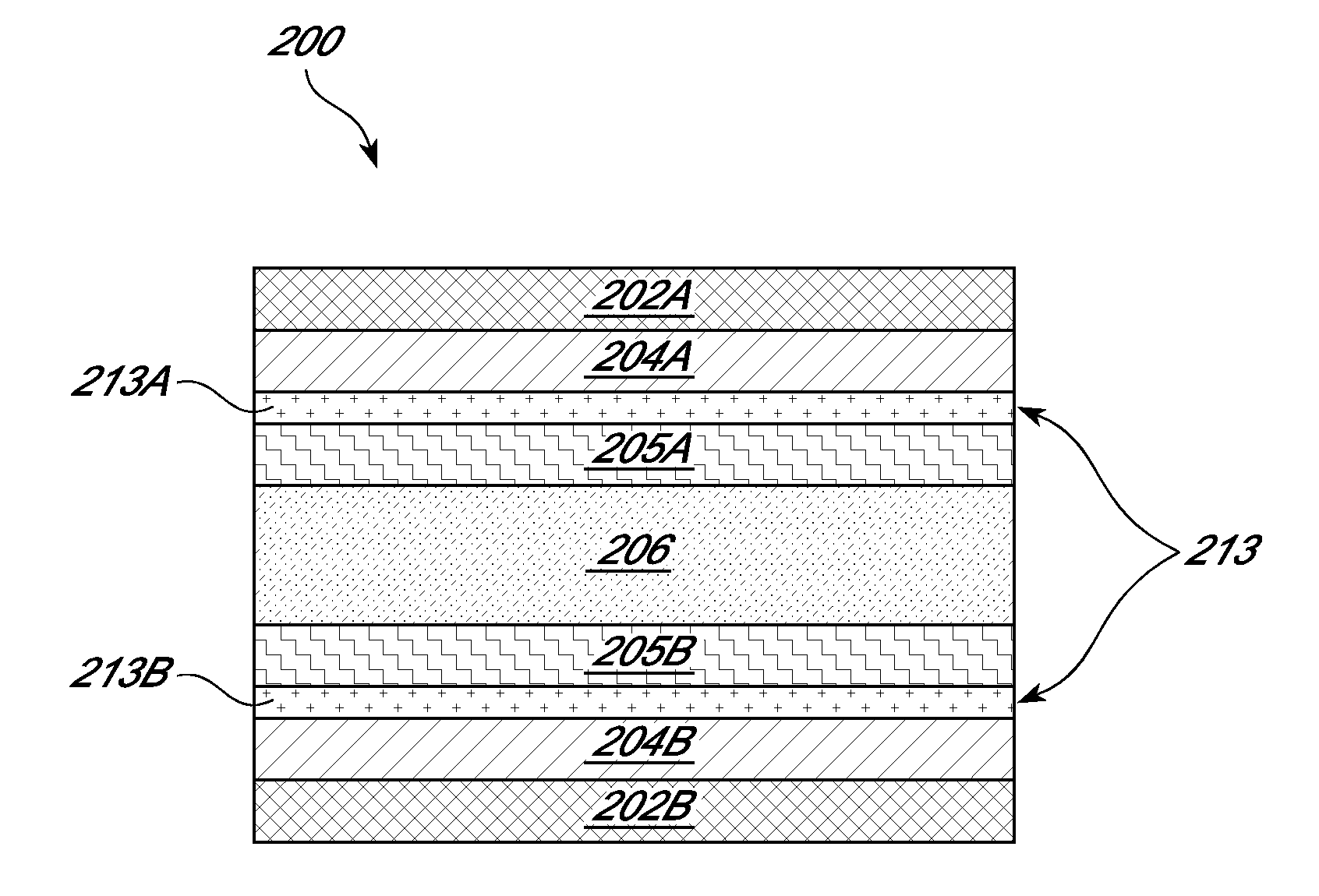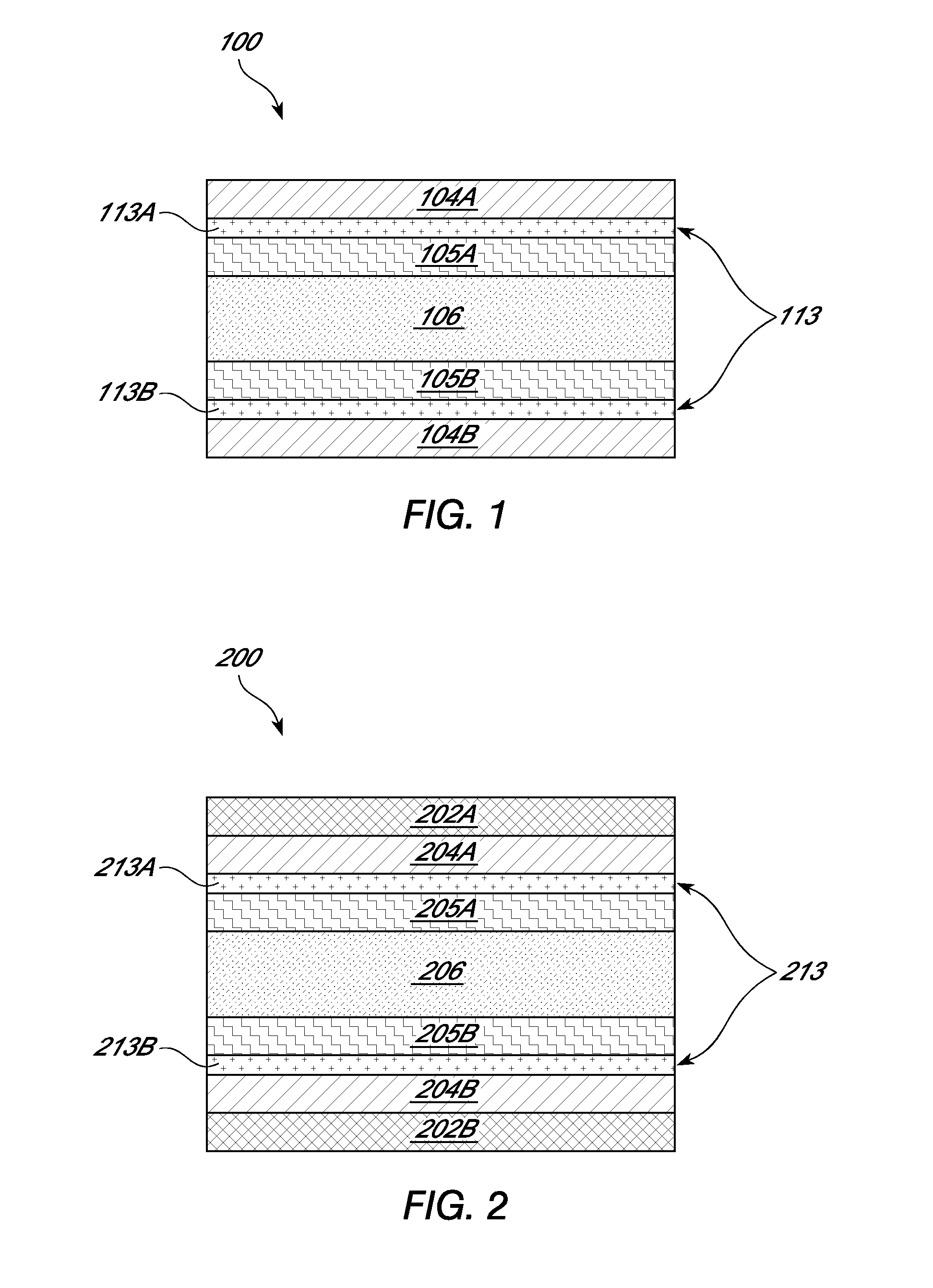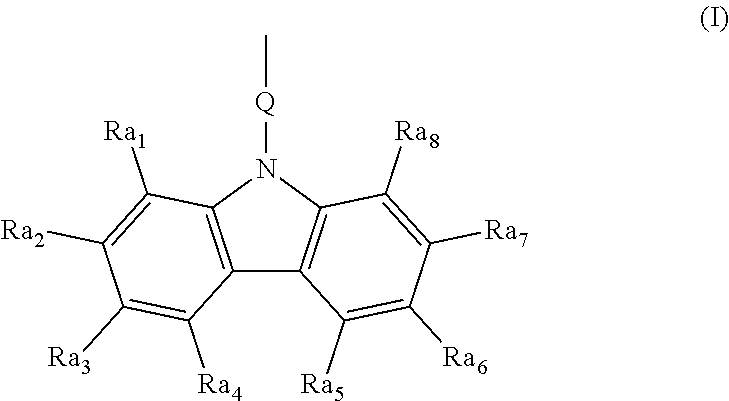Photorefractive devices having sol-gel buffer layers and methods of manufacturing
a photorefractive device and buffer layer technology, applied in the field of photorefractive devices and fabrication methods, can solve the problems of failure of photorefractive devices and increase the holding time of gratings, and achieve the effects of faster grating rise and decay time, higher electric breakdown strength, and larger single pulse grating signals
- Summary
- Abstract
- Description
- Claims
- Application Information
AI Technical Summary
Benefits of technology
Problems solved by technology
Method used
Image
Examples
example 1
Preparation of Photorefractive Devices
[0104]A photorefractive device was prepared having generally the same structure and components as shown in FIG. 2. From the outer layers to the inner layer were: two ITO-coated glass substrates (electrode and substrate), two sol-gel buffer layers, two polymer buffer layers, and a photorefractive layer. The photorefractive device was fabricated using the following steps:
[0105](i) Sol-gel solution: About 30 ml of MATMS was mixed with about 10 ml of absolute alcohol and stirred at about 60 degrees C. for about 10 minutes. Thereafter, about 2 ml of 0.2M HCl was added and stirred for about 4 hours at 60 degrees C. Then, about 3 ml of distilled water was added and stirred for about 2 hours at 60 degrees C. After cooling the solution down to room temperature, the solution was then mixed with about 17 ml of zirconium (IV) propoxide / MMA solution (about 4 ml MMA and about 13 ml zirconium (IV) propoxide 70% 1-propanol) and stirred at room temperature for a...
PUM
| Property | Measurement | Unit |
|---|---|---|
| dielectric constant | aaaaa | aaaaa |
| refractive index | aaaaa | aaaaa |
| thickness | aaaaa | aaaaa |
Abstract
Description
Claims
Application Information
 Login to View More
Login to View More - R&D
- Intellectual Property
- Life Sciences
- Materials
- Tech Scout
- Unparalleled Data Quality
- Higher Quality Content
- 60% Fewer Hallucinations
Browse by: Latest US Patents, China's latest patents, Technical Efficacy Thesaurus, Application Domain, Technology Topic, Popular Technical Reports.
© 2025 PatSnap. All rights reserved.Legal|Privacy policy|Modern Slavery Act Transparency Statement|Sitemap|About US| Contact US: help@patsnap.com



